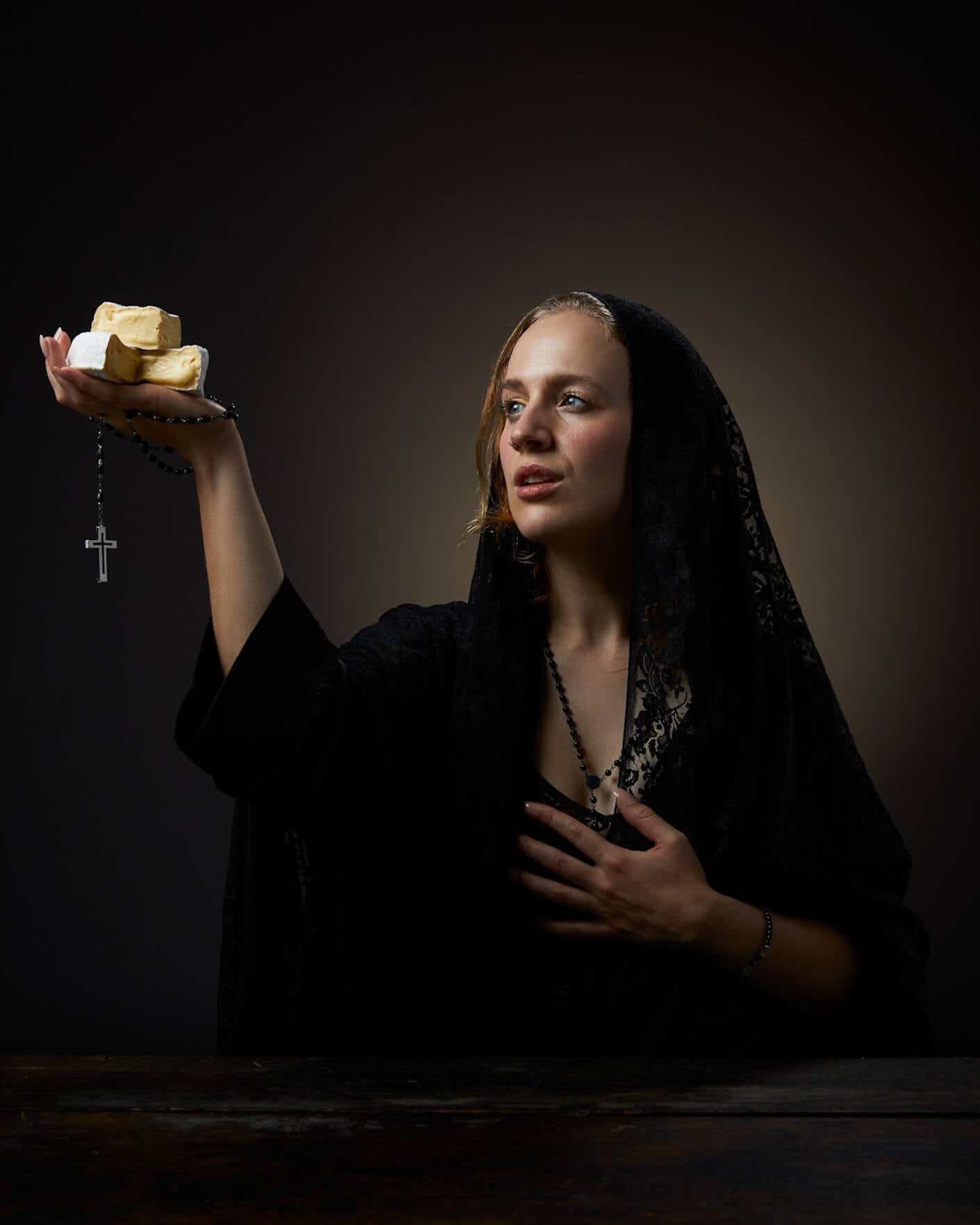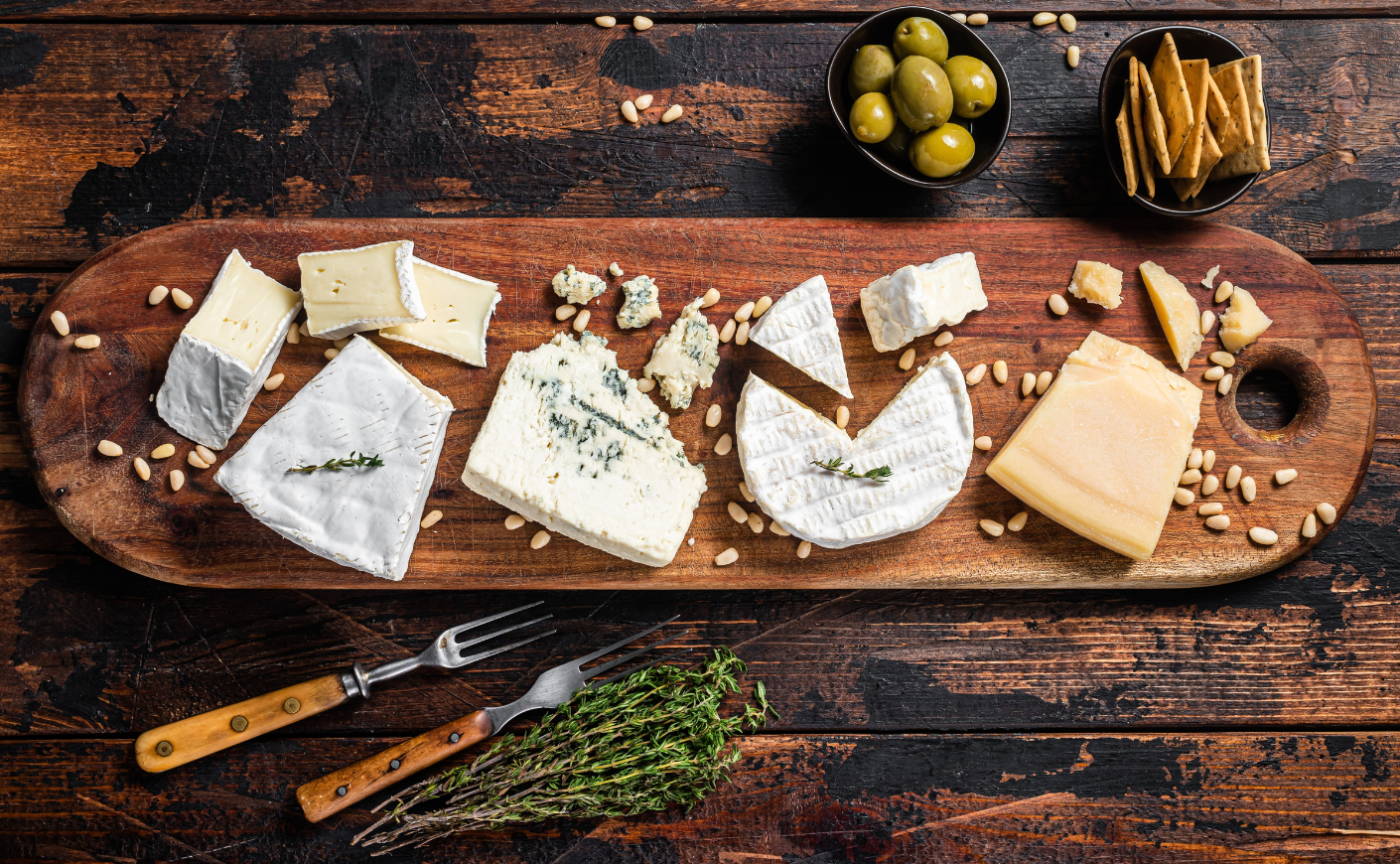If anyone can make you fall head over heels for cheese, it’s Erika Kubick. The expert cheesemonger, author, and self-described “cheese priestess” has built a career out of demystifying wedges, wheels, and rinds for curious eaters everywhere.
To get a better understanding of everyone’s favorite fermented dairy products, we called up Kubick to chat about her latest book, Cheese Magic: Seasonal Recipes, Plates, and Pairings. She also filled us in on how we can step outside of the grocery store to embrace more niche, artisanal, local options that will be sure to stun guests at upcoming holiday parties.
Plus, she’s got some recommendations for pairings — and we’re putting down the wine glass to explore exciting alternatives that are as delicious as they are unexpected. Consider this your invitation to join Kubick in sprinkling a little cheese magic onto your next charcuterie board, into your simmering pot of stew, or onto this afternoon’s humble snack plate.

KCM: What are your recommendations for “gateway cheeses” — fun options to help step outside of one's comfort zone?
Erika Kubick: I think the best way to do that in general is find a local cheese shop and local cheese monger, because the access you have to cheese can be so dependent on your location. There are so many small creameries that can't send their product out. But just know the cheeses you already do like — say, ricotta. You can go up to the cheese monger and say, “I really like ricotta. Do you have something like that?” Because if you like ricotta, maybe you’ll like a fresh goat cheese.
As far as specific cheeses that are pretty readily available, I would say Humboldt Fog is a really big one. If you've ever tried a brie, you can see that it kind of looks similar, but different, too. It has that line of ash on it, so that's exciting, but it's still pretty approachable. It also tastes like a goat cheese.
I would definitely recommend trying different varieties of fresh goat cheese because the ones that can be readily available are often mass produced. And it's kind of like making bread: Every little thing that you do — from the way you handle the curd to what the animals are eating — everything affects the resulting product. So you might not think you like goat cheese, but if you try one that's really well made, it could completely blow your mind.
The world of gouda is also really interesting. One of my favorites is L’Amuse Signature gouda. It’s unbelievable. It's very crunchy and tastes like butterscotch candy. It’s to die for.
Your book is specifically oriented around the seasons, too.
Absolutely. One of my big motivations for writing this book was to anchor people in the seasons and onto the land that they live on. When you're eating cheese, it comes from animals who eat the plants that are on the ground. What better way to connect to the land than to eat the milk that the animals make? There's this incredible cycle that's happening.
Cheese is also really seasonal, which is awesome. In the spring you get the dill, the strawberries, the radishes. And in summer, all the bounty comes. Then in fall, you get apples. The flavor difference between a spring goat cheese and a fall goat cheese is insane. They taste like different cheeses.
Which cheeses highlight different seasons?
When it's hot out, cheeses that are firm will sweat. If you try to eat hard sheep's milk cheese at a picnic, it's going to be a grease bomb. The fat just renders out underneath the sun, and it's not super cute. So I like to relegate those cheeses to the cooler months. They're also a little bit more unctuous, and you want a more cozy vibe in the winter and the fall anyway, so summertime is fresh cheese season.
That's your burratas, your ricottas, your fresh goat cheese, queso fresco, or halloumi on the grill. These cheeses also go the best with the vegetables and fruits that are in season. You can just put some olive oil, fresh tomato, salt and pepper with burrata — I know it's cliche, but it's delicious.
In the fall, I like to get a bit more cozy and eat richer cheeses. One of my favorite cheeses to eat in the fall is Harbison from Jasper Hill Farm. It's wrapped in bark, so it kind of tastes like the forest. It tastes like you're on a campsite.
During the holidays especially, I like the super indulgent cheeses, like triple cream brie. And I love just going to town on some parmigiano reggiano throughout the whole winter season. Especially because winter is such a good time for cooking soups and stews, and you can always put the rind on a parm into your soup or stew. It just adds so much flavor.
Do you have recommendations for surprising pairings?
I would caution against going too deep into the TikTok and Instagram recommendations because I think it's so important for the cheese to stand alone. I love Flaming Hot Cheetos with Prairie Breeze Cheddar, but my first advice is to try the cheese by itself. See if it tastes like anything to you. Maybe if you really love blueberries, and you're trying a brie and you kind of get the flavor of blueberries. Try some fresh blueberries or blueberry jam with that. But start slow and steady.
Do you have recommendations for beverage pairings that aren't wine?
Shrubs are wonderful. I actually have a recipe for a raspberry shrub in my book. You macerate fruit and sugar, then you add a bunch of vinegar and you create a syrup. It's so good and it's also very complex, which I think is really important. I think the reason people gravitate towards wine and beer is because alcohol brings a lot of complexity. I recommend making something like a shrub or even making a syrup with spices, herbs, flowers — whatever you want. Just add some seltzer [water] and some lemon juice. The mocktail is where it’s at right now.
If you could be a cheese, what cheese would you choose and why?
I actually think about this question a lot. I always choose an ash ripened goat cheese, mostly because it's one of my favorites. I think I feel spiritually connected to it, and I'm not really sure why. I just love the transformation that's so visible. Actually, one of these cheeses has quite the spotlight in one of the cheese plates [in my book]. It's on the protection plate. This is my favorite example of an ash ripened cheese, it's called Valençay.
I just love that it's so crisp and clean. You can see just all the different layers of life and activity that are happening — specifically for what the rind is doing. So on the outside, it can be a little bit intimidating. There's black ash on the outside, which actually helps to nurture the formation of the rind. My favorite part is right underneath — that’s where the cheese rind and the paste touch — there's something called a cream line. The molds, yeast, and bacteria that are on the rind are essentially digesting the inside and transforming it into this incredible, luxurious, gooey layer.
It makes me think a lot about what happens when we ourselves transform. When we go into the nitty gritty and unlock traumas, unlock the shadows and all the things that might make us seem a little bit scary on the outside. But when you dive deep into it, you can unlock so much about who your true self is.












